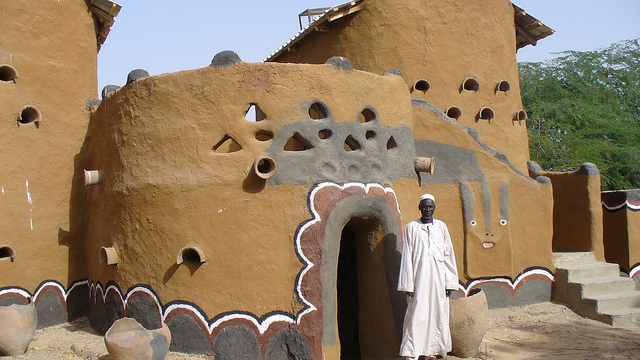The usage of historic building materials and designs frequently finds itself in a difficult situation where it must either be innovatively executed to suit current construction requirements and living circumstances or face extinction under the force of modernization.
The green building movement has given traditional construction materials and designs a fresh look, in part because it makes use of readily available local resources that may be used to effectively meet regional circumstances.
Innovative manufacturing and application methods have benefitted many conventional construction materials. Several conventional construction materials are now more technically sound, environmentally benign, and financially practical thanks to these advancements.
The following examples demonstrate techniques and innovations that aid in reducing climate change; in fact, traditional African homes are climate resistant and can adapt to any local weather conditions.

Africa’s architecture, like other facets of its culture, is incredibly varied. Africans have developed distinctive architectural traditions over the course of the continent’s history. Sometimes, more generalized styles can be recognized, like in the instance of the Sahelian architecture of a region of West Africa.
Traditional African architecture frequently employs fractal scaling, which causes smaller components of the building to resemble bigger ones. An example of this would be a circle community composed of round dwellings.
From the earliest times for which there is evidence, as with most architectural traditions abroad, foreign influences have had a significant impact on African architecture. Since the late 15th century, Western architecture has also affected coastal regions, and it is now a significant source for many bigger buildings, especially in major towns.
A variety of materials are used in African architecture. Structures can be found made of thatch, stick/wood, mud, mudbrick, rammed earth, and stone, with regional preferences varying.

For stone and rammed earth, look to North Africa for drystone and mortar, look to the Horn of Africa for mud/adobe, look to West Africa for thatch/wood and more perishable materials, look to Central Africa; for stone and thatch/wood, look to Southeast and Southern Africa.
The thick walls of traditional African houses are constructed of stone and sun-dried mud brick and are finished with mud plaster. These components enable the thick wall to operate as a thermal mass to warm the interior space at night during the dry season and to smooth out the significant diurnal temperature changes in the area.
Small windows are placed high on walls in strategic locations to encourage cross ventilation during hot weather, and they are covered with small, thick plants to function as thermal insulation. Sun-shading structures include deep recessed windows in walls and overhang from things like balconies.
Nigerian architect Mr. Mucktar Jibo revealed why he prefers traditional homes, saying that as a modern architect, he has learnt a lot from earlier construction methods.
In addition to the fact that innovative uses of conventional construction materials and designs are relevant to and helpful to developing nations, especially least developed countries, he noted that today’s technology also contributes to socioeconomic development and environmental protection
These Includes:
- Well-established and proven technologies and practices, which are updated for better performance and innovatively used for wider application in the local context, where they are implemented.
- Appropriate to local climatic conditions, and as such being energy efficient with little effort.
- Using locally available and accessible resources, to reduce the need for transporting materials from afar
- Nurturing local building material manufacturers
- Alleviating shortages of construction materials for certain regions and nations during construction boom periods
- Providing job opportunities for local work forces, whose skills and experience are readily relevant, due to the familiarity to the materials and techniques involved.
- Low-cost to no-additional cost for implementation
- Resulting buildings that are socially and culturally familiar to the users.
Murtar further added that ,the introduction of technology and electronic systems within the house has questioned the impressions of privacy as well as the segregation of work from home.
Technological developments in monitoring and communications provide understanding of private lives and habits. The upshot is that “the private becomes ever more public, the need for a protected home life develops, fed by the very media that destroy it”

